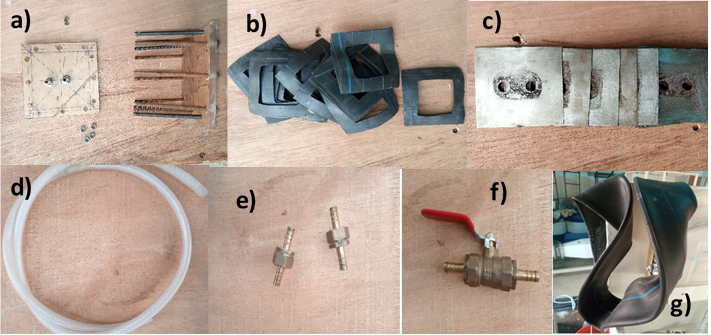Solar Energy Storage by Fuel Cell Technology at Abomey-Calavi (Benin)
Keywords:
Renewable Energy, storage, solar energy, electrolysis, hydrogen, fuel cell, BeninAbstract
West Africa has a great amount of sunshine power, varying between 5 kWh.m^{-2}.day^{-1} and 7 kWh.m^{-2}.day^{-1}. This power constitutes high energy source in the region. However, several locations in that area have no access to energy because of the lack of suitable technology and projects exploiting the source. The fundamental problem related to sun power or to renewable energies in general is the lack of efficient technology for energy storage. Batteries are generally used for this storage, but once charged, the excess of the energy from the solar photovoltaic panels (PV) is lost. Therefore, it is very important to find a system to recover the excess in order to optimize its use. In this context, hydrogen is considered a very promising candidate to fulfill this function and could become a highly developed energy vector in the future. The very numerous works undertaken over the past decade for the production of electricity by hydrogen fuel cells bear witness to this. The objective of this study is to test a more reliable solar energy storage system by using fuel cell technology. To achieve this, three steps have been necessary: (i) make an electrolyser using materials, (ii) produce hydrogen using a system of PV panels and (iii) convert the hydrogen produced into electricity through a fuel cell. The results obtained indicate a production of 0.020 m^3 of hydrogen after 150 min with a yield of 85.86%. The production of electricity by a 2 V fuel cell gives an efficiency of 0.0042%. Even if this value is low, a part of the lost energy has been recovered. In view of these results, the improvement of the device for converting chemical energy into electricity deserves to be deeply explored in West Africa.

Published
How to Cite
Issue
Section
Copyright (c) 2023 Odilon Joseph TOWANOU, Hagninou Elagnon Venance Donnou, Gabin Koto N’Gobi, Augustin Enonsi Leode, Basile Kounouh´ewa

This work is licensed under a Creative Commons Attribution 4.0 International License.





